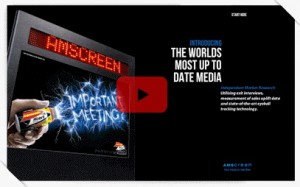Adrian J Cotterill, Editor-in-Chief
Great to see that Simon Sugar, CEO Amscreen seems to be (very much) carrying on the old UK tradition of Avanti Screenmedia and investing heavily in marketing research and sharing the results.
Simon, fresh from some bloke’s stag do we believe, told us (hic), “Amscreen are committed to independent market research to prove the impact of our screens across all our media networks”.
Amscreen engage a number of techniques including exit interviews, measurement of sales uplift and utilise state-of-the-art eyeball tracking technology (cue yet-another-unprompted plug for Quividi).
The latest research shows that Amscreen’s digital screen media networks present a phenomenal advertising opportunity to brands, delivering high levels of sales uplift, brand awareness and recall.
The Sales uplift data has been obtained from various sources including EPOS data from retailers and Synovate / Litmus tests. Some of the key sales uplift results include…
- Chocolate bar brand: 30%
- Mint brand: 36%
- Energy drink brand: 49%
- Carbonated soft drink: 36.6%
- Seasonal chocolate: 8.4%
- Alcohol: 29.1%
- Snack: 9.1%
- Sweet: 8.4%
Amscreen also commissioned Lake Market Research and Magpie Research to carry out extensive and quantitative exit interviews across the UK to understand awareness and influence of forecourt screen media. Prompted awareness results for the presence of the screens and advertised brands showed…
- Credit card brand: 41%
- Snack brand: 39%
- Energy drink brand: 37%
- Mint brand: 33%
- Credit card brand: 26%
79% of respondents noticed the screen AND of these…
- 89% stated that the sites were good locations for this sort of advertising
- 82% recalled seeing a particular ad or promotion on screen
- 73% said they might be influenced to act on a screen prompt
The Quividi ‘research’ (integrated directly onto the screen) measured how many people are in the vicinity of the screen (by gender and four age categories) and the percentage that actually stops to look at the screens which told Amscreen that…
- 94% average conversion rates from number of people in the vicinity of the screen to those that look at the screen
- Consistent and stable results over time (7 months) where customers continue to notice and watch the screen
- Market leading results aided by choice of sites, screen location, engaging content and the LED ticker


November 23rd, 2010 at 20:58 @915
Hats off to Amscreen for sharing, and a good win for the nice guys at Quividi
November 24th, 2010 at 13:01 @584
Thats true and well remembered Adrian we spent lots on research and shared it with the industry, interestingly quividi`s first assignment was with Asg on Spar tv. But it wasn`t just research that Asg pioneered, but portfolio engineering networks and that influence continues today with the emphasis upon retail convienence, and malls. Shame we couldn`t make the same success of the pub network…..or Asg
November 24th, 2010 at 16:24 @725
Nice lifts but not nice enough. I would not lead with it for a true ad buy. The issue is that product movement is so low in a single C-store that you would need triple digit lift for these products to defray the ad buy cost. Having worked at P&G I know that they demand a 3 to 1 sales lift for channel spends. There’s a reason for the rule of thumb. And in the DOOH world I’ve been in this situation more times than I care to count. DOOH should keep itself as a pure ad buy if they want the $$ they need today to move the industry forward. Amscreen should lead with the awareness, recall, brand perception, and INTENT to link to other media alternatives. The best thing about retail DOOH is we’re close the the point of purchase – but it’s also the worst thing when buys are scrutinized on returns.
November 25th, 2010 at 07:30 @354
It can only help the overall industry after some high profile failures in the last 5 years so thanks to Amscreen for investing in research and sharing the data
November 29th, 2010 at 14:29 @645
Well there seems very little data on how the screens influence patients in their healthcare GP surgery network. Fact, research shows that close to 90% of what a patient is told by their GP is forgotten within ten minutes of their consultation.So not sure how these screens work on patient recall regarding symptoms disease awareness ,were in most clinical cases there are a number of symptoms, that helps the clinician make an informed diagnosis.
The problem also is that the surgery is not a retail outlet so sales uplift would be difficult to measure! and as for measuring patient recall not sure if GPs would be doing cartwheels in the knowledge that thier patients would be interviewed in or around the surgery.
Could this be the reason that Amscreens web site is somewhat lacking of information regarding their GP screens. Even clever apprentices get it wrong!!